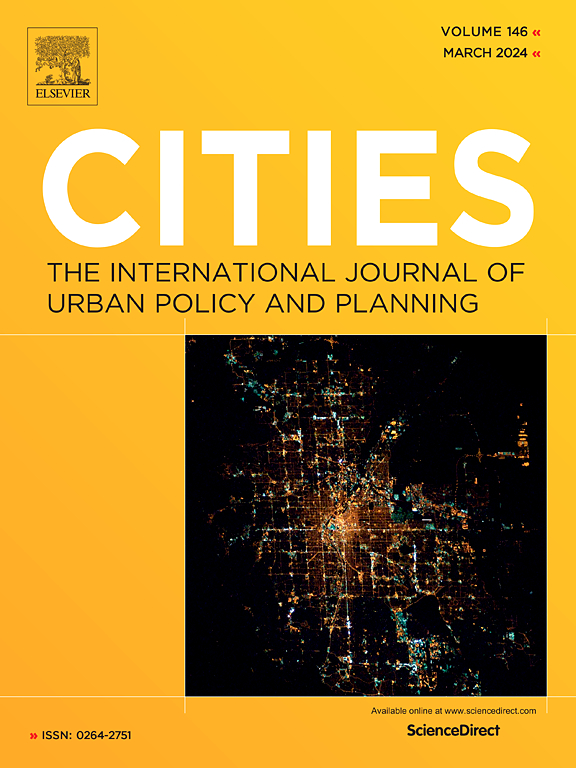城市食品购物趋势:基于多群体结构方程模型的伊斯坦布尔杂货偏好分析
IF 6.6
1区 经济学
Q1 URBAN STUDIES
引用次数: 0
摘要
随着科技和互联网的进步,网上购物越来越普遍,成为当代城市生活和生活质量不可分割的一部分。这项研究调查了家庭的人口特征,技术的存在,他们的杂货店购物频率,同时也解决了家庭互联网满意度。虽然现有文献通常考察的是在实体店和网上购物的习惯,但本研究将七个食品零售点分为传统、替代和在线三类。该研究以土耳其最大、人口最多的大都市伊斯坦布尔为重点,利用了伊斯坦布尔大都会市开放数据门户网站的数据。由于这些关系的复杂性,我们采用了一种先进的统计方法——多群结构方程模型。因此,我们可以在区域层面上进行空间评价,也可以对城市的总体趋势进行空间评价。研究结果表明,随着人口统计特征的改善,去杂货店购物的频率会降低。随着科技的发展,网上和其他的杂货店购物点是首选。在人口统计特征中,社会经济地位是决定购物点偏好的最重要因素。具体来说,研究结果表明,尽管在线杂货购物与人口特征之间的关系在欧洲一侧的城市中心很弱,但随着人们向外围移动,这种关系会加强。相比之下,安纳托利亚一方表现出更平衡的关系。该研究的结果有望成为制定大都市规模食品政策的基础,并为杂货零售部门的利益相关者提供相关见解。本文章由计算机程序翻译,如有差异,请以英文原文为准。
Urban food shopping trends: An analysis of Istanbul's grocery preferences via multi group structural equation model
With the advancement of technology and the internet, online grocery shopping has become increasingly prevalent, transforming into an integral part of contemporary urban life and quality of living. This study investigates the demographic features of households, the presence of technology, and their grocery shopping frequency, while also addressing household internet satisfaction. While existing literature typically examines grocery shopping habits in-store and online, this research categorizes seven food retail points into traditional, alternative, and online categories. The study focuses on Istanbul, Türkiye's largest and most populous metropolitan city, utilizing data from the Istanbul Metropolitan Municipality's Open Data Portal. Due to the complexity of the relationships, we use the multi-group structural equation model, an advanced statistical method. Thus, we can make spatial evaluations at the district level as well as the general trend of the city.
The findings indicate that as demographic features improve, the frequency of grocery shopping decreases. With the presence of technology, online and alternative grocery shopping points are preferred. Socioeconomic status is the most influential factor in determining shopping point preferences among demographic features. Specifically, the results show that while the relationship between online grocery shopping and demographic characteristics is weak in the city center of the European side, it strengthens as one moves toward the periphery. In contrast, the Anatolian side displays more balanced relationships. The study's findings are expected to serve as a foundation for developing food policies at the metropolitan scale and provide relevant insights for stakeholders in the grocery retail sector.
求助全文
通过发布文献求助,成功后即可免费获取论文全文。
去求助
来源期刊

Cities
URBAN STUDIES-
CiteScore
11.20
自引率
9.00%
发文量
517
期刊介绍:
Cities offers a comprehensive range of articles on all aspects of urban policy. It provides an international and interdisciplinary platform for the exchange of ideas and information between urban planners and policy makers from national and local government, non-government organizations, academia and consultancy. The primary aims of the journal are to analyse and assess past and present urban development and management as a reflection of effective, ineffective and non-existent planning policies; and the promotion of the implementation of appropriate urban policies in both the developed and the developing world.
 求助内容:
求助内容: 应助结果提醒方式:
应助结果提醒方式:


